Battle Of The Budgets: Pixel 9a Vs Galaxy S24 FE Vs IPhone 16e Performance Tested
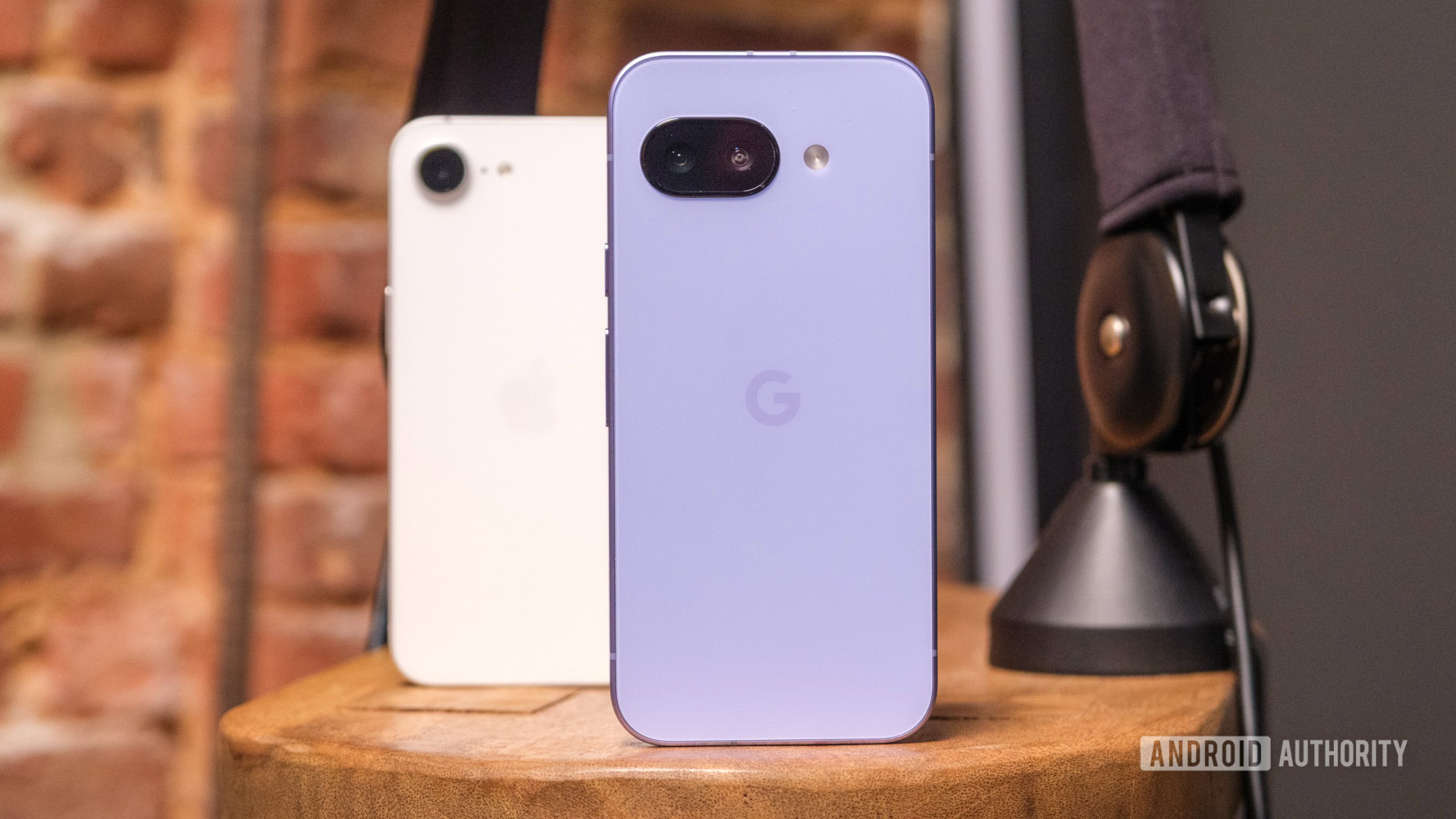
Ryan Haines / Android Authority
If you want flagship features without the price tag, there’s a good selection of options on the market right now. Google’s new Pixel 9a joins the likes of the Samsung Galaxy S24 FE and Apple iPhone 16e as great middle-of-the-market picks for the budget-conscious. In fact, the 9a is the cheapest of the three at just $499 rather than $659 and $599, respectively, yet it continues to sport a dual camera configuration and flagship-tier Tensor G4 processor. Can it really be that good of a deal?
If you’ve been wondering which of these three phones nails the smartphone fundamentals the best, then you’ve come to the right place. I’ve run each through our benchmarking suite to see which will best handle daily workloads, heavier use cases, and intensive gaming sessions. Check out the table before for a quick overview of how these phones stack up in terms of processing components.
| SoC | Tensor G4 | Exynos 2400e | Apple A18 |
|---|---|---|---|
| SoC Process | Tensor G4 Samsung 4nm | Exynos 2400e Samsung 4nm | Apple A18 TSMC 3nm |
| SoC CPU | Tensor G4 1x Arm Cortex-X4 (3.1GHz) | Exynos 2400e 1x Arm Cortex-X4 (3.2GHz) | Apple A18 2x Performance (4.05GHz) |
| SoC GPU | Tensor G4 Arm Mali-G715 MC7 | Exynos 2400e AMD Xclipse 940 | Apple A18 Apple 4-core |
| SoC RAM | Tensor G4 8GB | Exynos 2400e 8GB | Apple A18 8GB |
You’re reading an Authority Insights story. Discover Authority Insights for more exclusive reports, app teardowns, leaks, and in-depth tech coverage you won’t find anywhere else.
Pixel 9a vs Galaxy S24 FE vs iPhone 16e benchmarks
Let’s dive right in to see how Apple’s A18, Google’s Tensor G4, and Samsung’s Exynos 2400e — all developed in-house — compare in the industry’s most popular benchmarks. We’ll start our tests with a run of GeekBench 6, giving us a look at how the phone’s processors handle single-core bound tasks, like booting up an app or web page for the first time, and more typical multi-core situations like flicking through social apps or your image gallery.
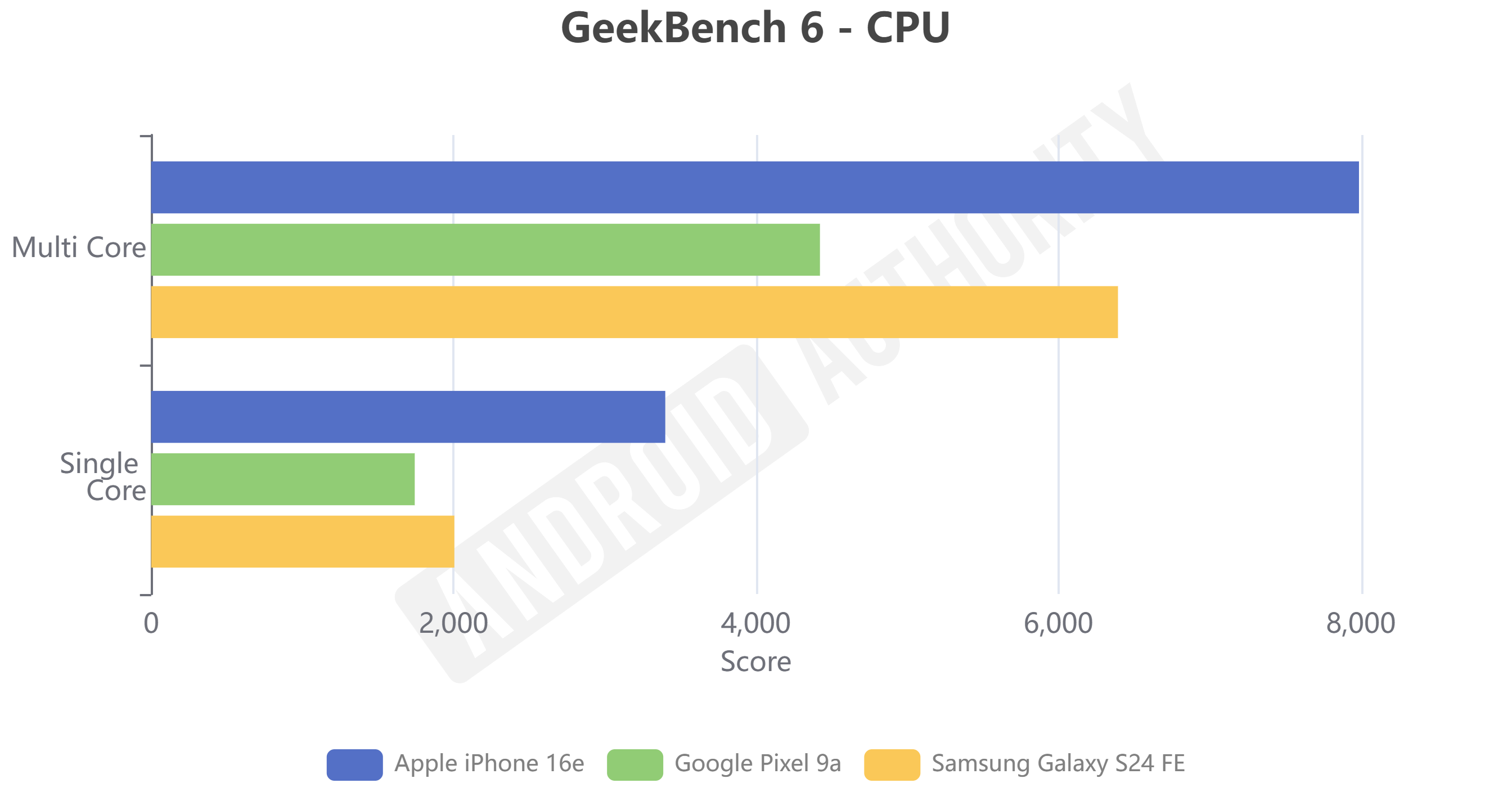
Robert Triggs / Android Authority
Apple’s custom CPU cores held a significant advantage over its Android rivals until Qualcomm’s Oryon CPU core came along. However, neither the Pixel 9a nor Galaxy S24 FE have those, so we’re back to seeing a significant lead for Apple over Arm Cortex cores in both single- and multi-core scenarios. Apple’s single-core win is particularly huge, virtually doubling the performance of the Pixel 9a. Thankfully, the Galaxy S24 FE closes the gap in multi-core situations, which are far more common nowadays.
Apple has the faster CPU, but Samsung’s GPU will be the gamer’s choice.
More performance is better, of course, but there’s a bit of a ceiling for what you’ll need for your day-to-day tasks. Browsing the web and posting to social runs perfectly fine on the Pixel 9a. Instead, you’ll need really CPU-intensive tasks (like video editing) to feel the difference in real apps. Still, the iPhone 16e is definitely the most future-proof, but I’m a little concerned about how well the Pixel 9a will handle whatever apps we’re all running on our phones five or six years down the line.
When it comes to graphics, all three of these phones have some compromises compared to the fastest in the business. The iPhone 16e’s A18 chip has just four GPU cores, down from five in the regular iPhone 16 and six in the Pro models. Likewise, the Galaxy S24 FE’s last-gen Exynos 2400e chip has a slightly older GPU design, and Google’s use of a mid-tier Arm Mali setup has never been benchmark-topping. Still, this makes for a rather interesting comparison.
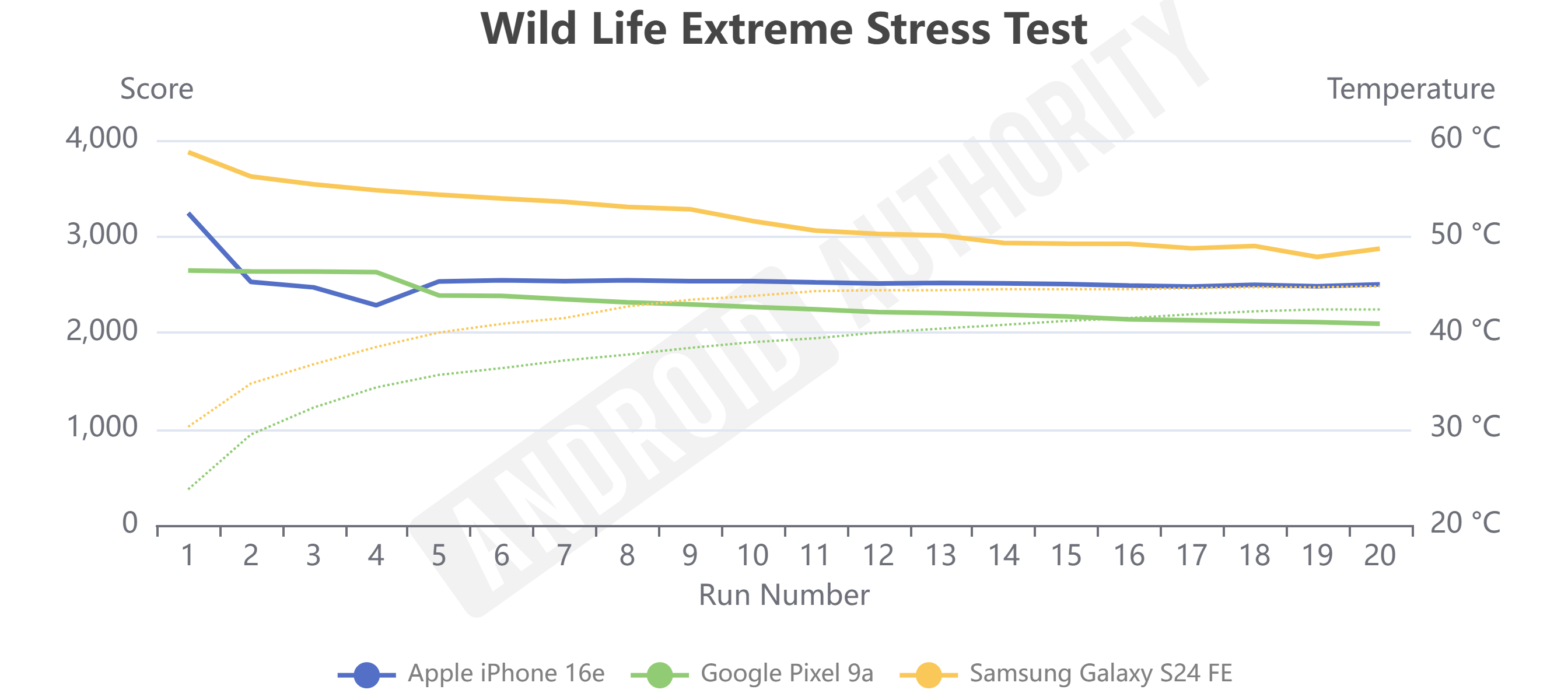
Robert Triggs / Android Authority
Just last year, the Samsung Galaxy S24 FE’s Xclipse 940 graphics chip was a top-tier flagship GPU. It is clearly leaps and bounds ahead of the competition in both quick bursts and prolonged gaming sessions. Its drop to 71.9% of its best result in 3DMark’s Wild Life Extreme Stress Test isn’t particularly great, but its large head start over the competition means that it never really comes close to closing the gap.
The Pixel 9a lands at the bottom of the pile on a quick test, but the phone holds up better under moderate stress compared to the iPhone 16e. Apple’s budget model gives up most of its performance, falling to just 70.4% of its peak, without much temperature build-up, falling below the budget Pixel under moderate load. By the end of our 20-minute stress test, the three were back in their starting order, although the performance gap had narrowed somewhat, owing to the Pixel 9a’s pretty decent 79.1% stability score and temperature.
Which is the best mid-range performer?
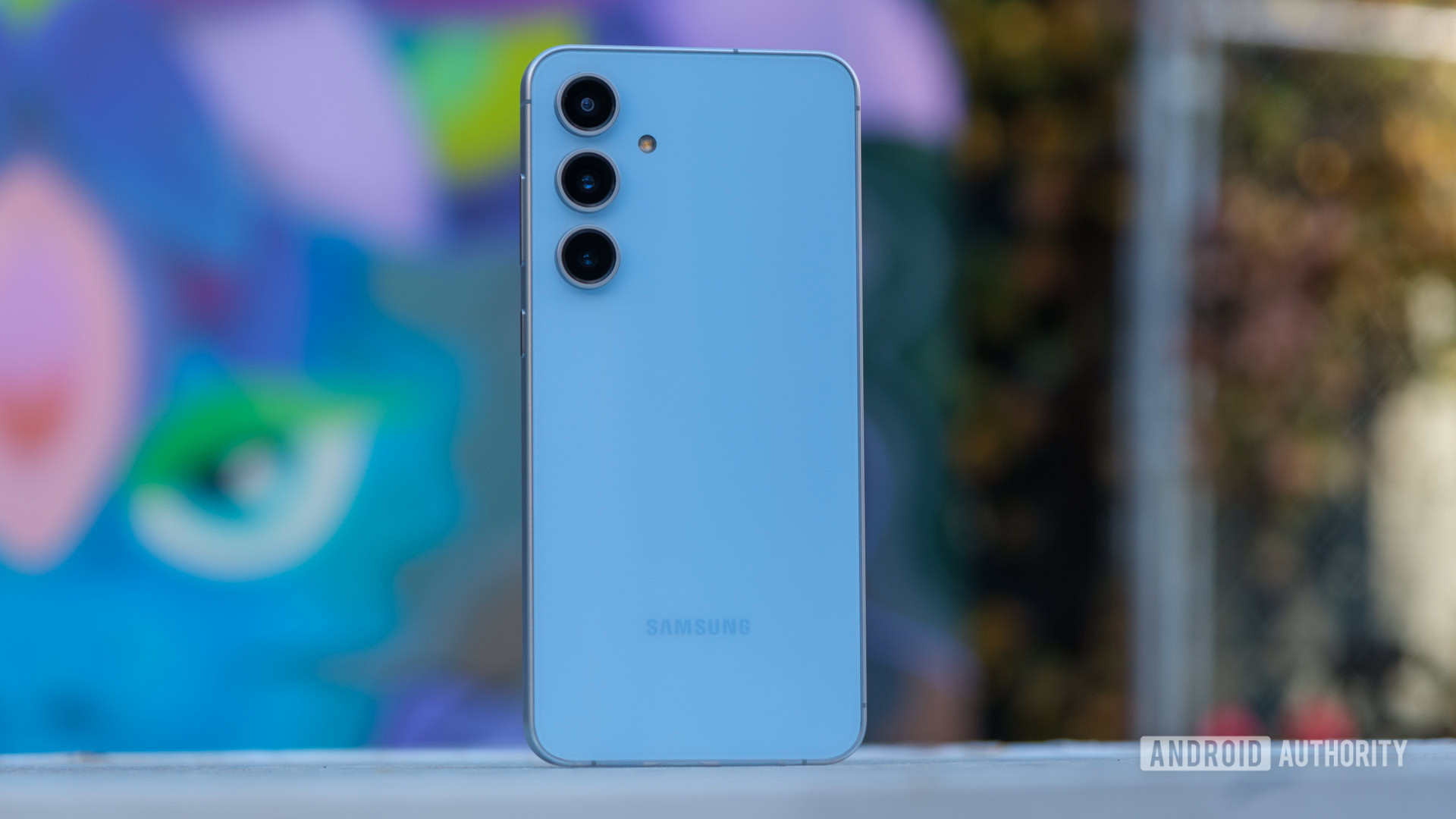
Ryan Haines / Android Authority
At first glance, Apple might appear to come out on top when it comes to packing a high-performing chip in an affordable smartphone. However, the iPhone 16e’s undeniable CPU advantage is unlikely to make much of a meaningful difference to your daily experience. Especially as the phone has inferior battery life compared to the Galaxy S24 FE and ranks even further behind the incredibly frugal Google Pixel 9a. Furthermore, the phone doesn’t quite have the graphics grunt of Apple’s more expensive flagships and can become hot enough to throttle hard in longer sessions. The iPhone 16e is a reasonable effort from Apple but doesn’t necessarily strike the ideal balance.
Still, outside of heavy emulation, high-end mobile games don’t push handsets quite as hard as our stress test, meaning all three of these phones will handle even some of the market’s most intensive mobile games without too much issue. You might have to turn some settings down to hit 60fps on supported titles. But if you’re looking to do a lot of gaming on a budget or plan to keep playing long into the decade, the Samsung Galaxy S24 FE strikes the best balance of day-to-day performance with more powerful gaming capabilities. That said, it is the most expensive of the three phones, so be prepared to pay for those extra frames.
The Galaxy S24 FE strikes the best performance balance, but you’ll have to pay more for it.
That leaves the Google Pixel 9a last but by no means least. Granted, it doesn’t win any of our benchmarks, and I am a little concerned about exactly how well the phone will hold up come the end of its seven years of software support compared to the other two, which will see equally long lifespans. However, the Tensor G4 inside the Pixel 9a performs virtually identically to the one in the Pixel 9, and that phone’s no slouch. Given it’s a good deal cheaper than the iPhone 16e and Galaxy S24 FE, it’s still really in the mix and will take you through a busy workday and more without dropping the ball.
It might be a cop-out, but there’s not really a bad pick between these three; it all depends on your budget. Of course, there’s plenty more that makes a great phone too, including the camera, battery life, and software features that will probably tilt the scales one way or the other. Speaking of battery life, I’ll be looking more closely at how these three mid-range models stack up against each other there as well in another article, so stay tuned.
See price at eBay
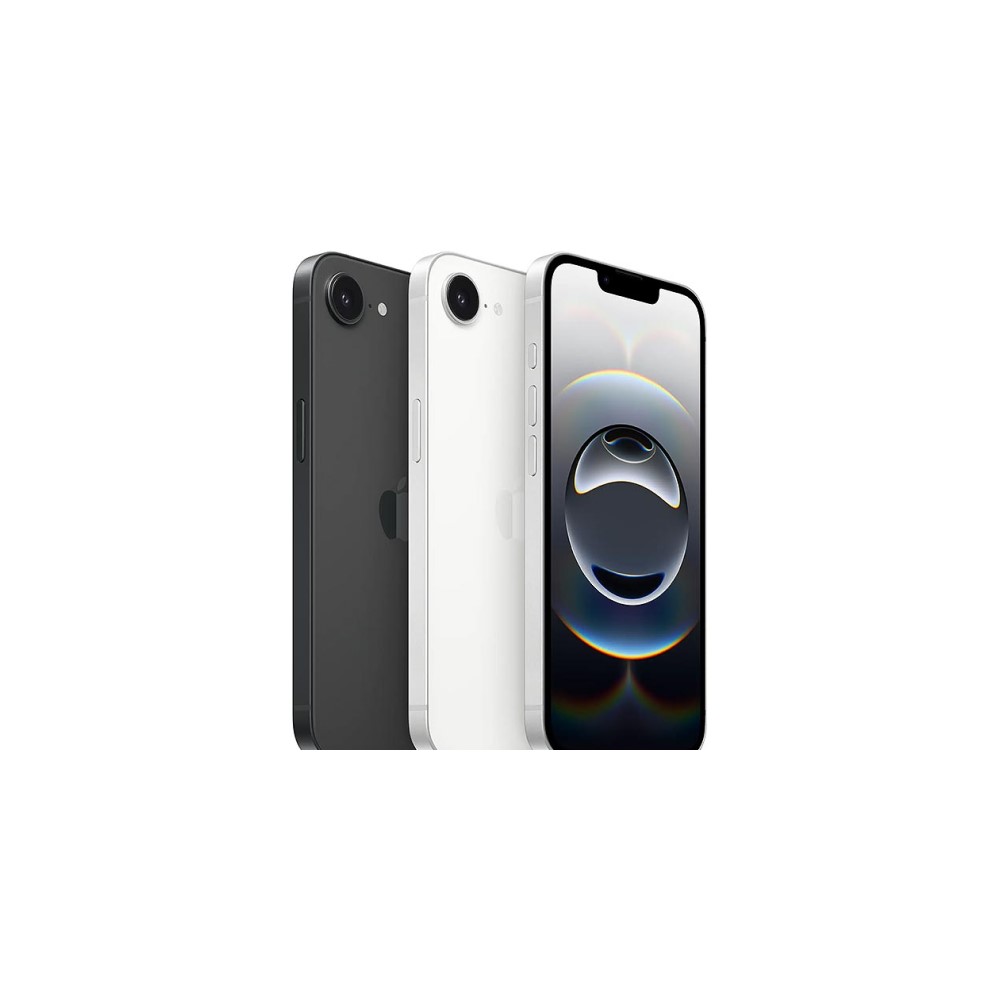
Apple iPhone 16e
Great update support
Solid performance
Simple, straightforward design
See price at Amazon

14%off
Samsung Galaxy S24 FE
Flexible cameras for the price
Class-leading update commitment
Great value
What’s your reaction?
Love0
Sad0
Happy0
Sleepy0
Angry0
Dead0
Wink0
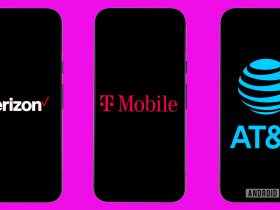
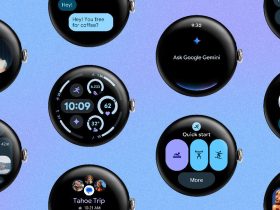

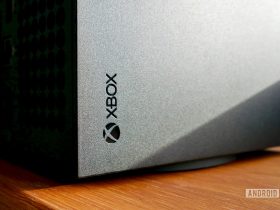

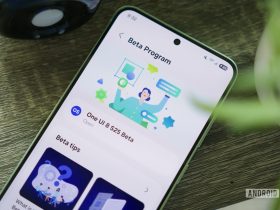
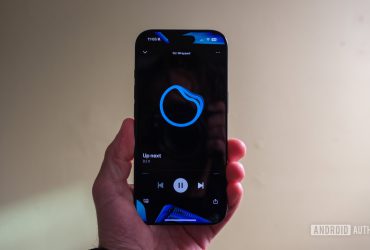
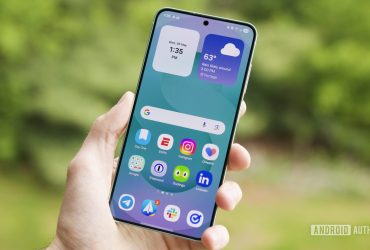
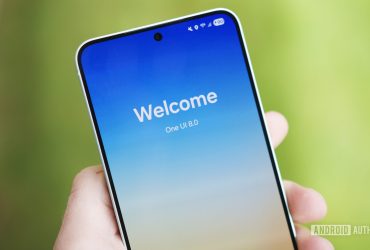

Leave a Reply
View Comments